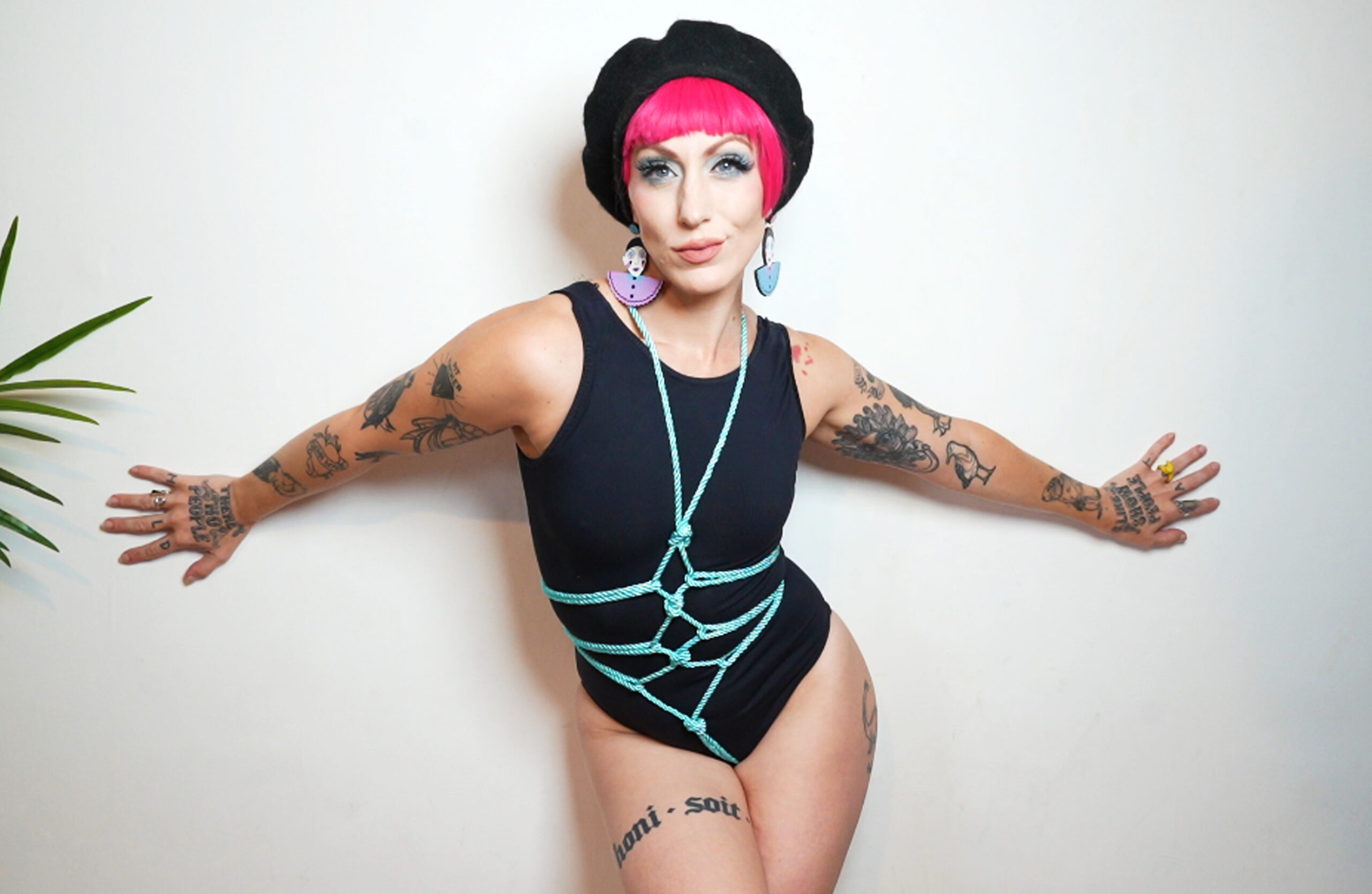The complexity of graysexuality in romantic and sexual contexts
The Complexity Of Graysexuality In Romantic And Sexual Contexts

Understanding Graysexuality
Graysexuality exists on a spectrum, defying rigid definitions of sexuality. It explores the complexities of attraction and desire, where individuals experience varying levels of sexual interest that fluctuate over time or across different partners. Understanding this nuanced identity requires moving beyond binary labels and embracing the fluidity of human experience.
Definitions and Nuances
Graysexuality encompasses a spectrum of experiences where individuals identify with elements of both sexual and asexual orientations. It challenges traditional notions of sexuality by recognizing that sexual desire is not always constant or all-or-nothing. People who identify as graysexual may experience occasional or fluctuating sexual interest, while others might have a lower overall desire compared to someone who identifies as strictly sexual.
The term “graysexuality” itself reflects this fluidity, highlighting the space between the binary categories of asexual and sexual. It acknowledges that attraction and desire can be complex and multifaceted, varying across individuals and situations. For some, graysexuality might mean experiencing infrequent but meaningful sexual encounters, while for others it could involve a preference for non-sexual intimacy.
Understanding graysexuality requires recognizing the diversity of human experiences and embracing the spectrum of sexuality. It’s essential to respect individual preferences and avoid imposing rigid definitions or expectations. Open communication and respectful dialogue are crucial when navigating the complexities of graysexuality and other sexual identities.
Spectrum of Experiences
Graysexuality exists on a spectrum, defying rigid definitions of sexuality. It explores the complexities of attraction and desire, where individuals experience varying levels of sexual interest that fluctuate over time or across different partners. Understanding this nuanced identity requires moving beyond binary labels and embracing the fluidity of human experience.
Graysexual individuals may experience occasional or fluctuating sexual interest, while others might have a lower overall desire compared to someone who identifies as strictly sexual. They can find fulfillment in both sexual and non-sexual forms of intimacy. Some graysexual people may be open to exploring their sexuality more fully at times, while others might prioritize other aspects of their relationships.
The key to understanding graysexuality is recognizing that sexual desire is not a static or universal experience. It’s influenced by individual preferences, personal history, and situational factors. Respecting individual experiences and avoiding assumptions about someone’s sexual desires based on their label is crucial for fostering inclusivity and understanding.
Romantic Contexts
Graysexuality presents a compelling exploration of human sexuality, challenging traditional binary classifications. It recognizes the fluidity of sexual desire, acknowledging that attraction and interest can vary across individuals and circumstances.
Attraction and Relationships
Graysexuality is a spectrum identity that encompasses individuals who experience sexual attraction in varying degrees. Unlike strict definitions of sexual or asexual orientations, graysexual individuals navigate a complex landscape of fluctuating desires, sometimes experiencing heightened interest while other times feeling less inclined towards sexual activity. This fluidity challenges the notion of fixed sexual identities and emphasizes the individual nature of human attraction.
Within romantic contexts, graysexuality adds another layer of complexity to relationships. Partners may need to openly communicate their needs and expectations regarding intimacy. Understanding and accepting fluctuations in desire is crucial for healthy relationships involving graysexual individuals.
Attraction within graysexuality can manifest differently for each person. Some might find themselves drawn to particular individuals or situations, while others experience a more general sense of attraction. This fluidity extends beyond romantic partners; graysexual individuals may find themselves attracted to friends, family members, or even fictional characters.
It’s important to remember that graysexuality is not about choosing to be asexual or sexual but rather about embracing the reality of one’s own experiences and desires. It’s a valid and meaningful identity that deserves respect and understanding.
Communication and Disclosure
Graysexuality, in its essence, challenges traditional understandings of sexuality by acknowledging the fluidity and spectrum of human experience. Within romantic contexts, it introduces nuances to communication and disclosure around desire.
Open and honest conversation becomes paramount. Graysexual individuals might need to articulate their fluctuating levels of sexual interest and preferences to partners, ensuring mutual understanding and respect.
Similarly, partners should approach conversations about intimacy with sensitivity, recognizing that desires can change over time or in different situations. plus split panties
The key is to create a safe space where both partners feel comfortable expressing their needs and boundaries without judgment.
Transparency about one’s graysexuality identity can foster deeper intimacy by allowing partners to connect on a more authentic level.
By embracing the complexity of graysexuality, relationships can evolve to accommodate individual experiences and navigate the dynamic nature of desire.
Sexual Contexts
Graysexuality is a spectrum identity that challenges traditional definitions of sexuality. It encompasses individuals who experience sexual attraction on a fluctuating scale, sometimes experiencing heightened interest while at other times feeling less inclined towards sexual activity.
Defining Sexual Activity
Understanding graysexuality requires recognizing the diversity of human experiences and embracing the spectrum of sexuality. It’s essential to respect individual preferences and avoid imposing rigid definitions or expectations. Open communication and respectful dialogue are crucial when navigating the complexities of graysexuality and other sexual identities.
Graysexual individuals may experience occasional or fluctuating sexual interest, while others might have a lower overall desire compared to someone who identifies as strictly sexual. They can find fulfillment in both sexual and non-sexual forms of intimacy. Some graysexual people may be open to exploring their sexuality more fully at times, while others might prioritize other aspects of their relationships.
The key to understanding graysexuality is recognizing that sexual desire is not a static or universal experience. It’s influenced by individual preferences, personal history, and situational factors. Respecting individual experiences and avoiding assumptions about someone’s sexual desires based on their label is crucial for fostering inclusivity and understanding.
Graysexuality presents a compelling exploration of human sexuality, challenging traditional binary classifications. It recognizes the fluidity of sexual desire, acknowledging that attraction and interest can vary across individuals and circumstances.
Attraction within graysexuality can manifest differently for each person. Some might find themselves drawn to particular individuals or situations, while others experience a more general sense of attraction. This fluidity extends beyond romantic partners; graysexual individuals may find themselves attracted to friends, family members, or even fictional characters.
It’s important to remember that graysexuality is not about choosing to be asexual or sexual but rather about embracing the reality of one’s own experiences and desires. It’s a valid and meaningful identity that deserves respect and understanding.

Exploring Consent and Boundaries

Graysexuality exists on a spectrum, defying rigid definitions of sexuality. It explores the complexities of attraction and desire, where individuals experience varying levels of sexual interest that fluctuate over time or across different partners. Understanding this nuanced identity requires moving beyond binary labels and embracing the fluidity of human experience.
The term “graysexuality” itself reflects this fluidity, highlighting the space between the binary categories of asexual and sexual. It acknowledges that attraction and desire can be complex and multifaceted, varying across individuals and situations. For some, graysexuality might mean experiencing infrequent but meaningful sexual encounters, while for others it could involve a preference for non-sexual intimacy.
Consent within a graysexual context requires open communication and mutual respect. As sexual interest fluctuates, establishing clear boundaries around physical intimacy becomes crucial. Both partners need to feel comfortable expressing their desires and limits without fear of judgment or pressure.

For some graysexual individuals, exploring their sexuality might involve negotiating different types of intimacy with their partners. This could include prioritizing emotional connection, cuddling, kissing, or other forms of physical touch that are comfortable for both parties, regardless of whether sexual intercourse is involved.
Open and honest communication about desires, boundaries, and comfort levels is essential in any relationship, but it’s particularly important for navigating the complexities of graysexuality. Regular check-ins and ongoing conversations can help ensure that both partners feel heard, respected, and satisfied within the relationship.
Societal Perceptions and Challenges
Societal perceptions of sexuality are often shaped by rigid binary categories, failing to encompass the diverse spectrum sex toy shop uk of human experience. Graysexuality, a term encompassing individuals with fluctuating levels of sexual desire, challenges these traditional norms. Understanding graysexuality requires moving beyond simplistic definitions and embracing the fluidity of attraction and desire.
Stigma and Misconceptions
Societal perceptions often struggle to grasp the nuances of sexuality, particularly identities that fall outside the binary framework of “sexual” or “asexual.” Graysexuality, a term describing individuals with fluctuating levels of sexual interest, encounters significant misconceptions and stigma due to these rigid societal norms.
One common misconception is that graysexuality represents an indecisiveness about one’s sexuality. However, it’s important to recognize that graysexuality is a valid identity, not a temporary phase or a choice. It reflects the reality of fluctuating desires and experiences, which are normal and natural for many individuals.
Another challenge faced by graysexual individuals is the pressure to conform to societal expectations regarding sexual activity. They might be judged or misunderstood for not engaging in sex as frequently as someone who identifies as strictly “sexual,” leading to feelings of isolation and self-doubt.
The lack of representation and understanding of graysexuality in media and popular culture further contributes to the stigma surrounding it. Limited exposure to diverse sexual identities perpetuates the misconception that there are only two distinct categories, reinforcing the binary framework that excludes individuals who identify as graysexual.
Open and honest conversations about sexuality, including challenging societal norms and misconceptions, are crucial for creating a more inclusive environment. Promoting understanding and acceptance of diverse sexual identities like graysexuality is essential for fostering a society where individuals feel comfortable expressing their true selves without fear of judgment or discrimination.
Navigating Intersectional Identities
Graysexuality exists on a spectrum, defying rigid definitions of sexuality. It explores the complexities of attraction and desire, where individuals experience varying levels of sexual interest that fluctuate over time or across different partners. Understanding this nuanced identity requires moving beyond binary labels and embracing the fluidity of human experience.
Graysexuality presents a compelling exploration of human sexuality, challenging traditional binary classifications. It recognizes the fluidity of sexual desire, acknowledging that attraction and interest can vary across individuals and circumstances.
- Societal perceptions often struggle to grasp the nuances of sexuality, particularly identities that fall outside the binary framework of “sexual” or “asexual.” Graysexuality, a term describing individuals with fluctuating levels of sexual interest, encounters significant misconceptions and stigma due to these rigid societal norms.
- One common misconception is that graysexuality represents an indecisiveness about one’s sexuality. However, it’s important to recognize that graysexuality is a valid identity, not a temporary phase or a choice. It reflects the reality of fluctuating desires and experiences, which are normal and natural for many individuals.
- Another challenge faced by graysexual individuals is the pressure to conform to societal expectations regarding sexual activity. They might be judged or misunderstood for not engaging in sex as frequently as someone who identifies as strictly “sexual,” leading to feelings of isolation and self-doubt.
Open and honest conversations about sexuality, including challenging societal norms and misconceptions, are crucial for creating a more inclusive environment. Promoting understanding and acceptance of diverse sexual identities like graysexuality is essential for fostering a society where individuals feel comfortable expressing their true selves without fear of judgment or discrimination.
Supporting Graysexual Individuals
Graysexuality exists on a spectrum, defying rigid definitions of sexuality. It explores the complexities of attraction and desire, where individuals experience varying levels of sexual interest that fluctuate over time or across different partners. Understanding this nuanced identity requires moving beyond binary labels and embracing the fluidity of human experience.
The term “graysexuality” itself reflects this fluidity, highlighting the space between the binary categories of asexual and sexual. It acknowledges that attraction and desire can be complex and multifaceted, varying across individuals and situations. For some, graysexuality might mean experiencing infrequent but meaningful sexual encounters, while for others it could involve a preference for non-sexual intimacy.
Supporting graysexual individuals involves recognizing their experiences as valid and fostering an environment of understanding and acceptance. This means challenging societal norms that impose rigid categories on sexuality and embracing the diverse spectrum of human experience. Open communication and respectful dialogue are crucial when navigating the complexities of graysexuality and other sexual identities.
Resources and Community
Supporting graysexual individuals begins with understanding their experiences as valid and unique.
Graysexuality is a spectrum, meaning people’s levels of sexual interest can change over time and depending on the situation or partner. It’s important to remember that there is no “right” way to be graysexual, just like there is no one-size-fits-all definition of sexuality.
Here are some ways to be supportive:
- Listen and learn.
- Ask open-ended questions about their experiences and preferences without making assumptions or judgments.
- Educate yourself about graysexuality and other sexual identities to challenge your own biases and broaden your understanding.
- Respect their boundaries and choices regarding intimacy.
- Don’t pressure them to label themselves or engage in sexual activity that they are not comfortable with.
- Create a safe and supportive environment where they feel comfortable sharing their feelings and needs without fear of ridicule or judgment.
Connecting with a community can be invaluable for graysexual individuals. Here are some resources:
- Online Forums and Communities: Many online platforms provide spaces for graysexual people to connect, share experiences, and offer support to one another.
- Advocacy Groups: Organizations dedicated to promoting sexual diversity and equality often have resources specific to graysexuality or provide general support for LGBTQ+ individuals.
- Therapists Specialized in Sexual Identity: Seeking guidance from a therapist who understands the nuances of graysexuality can be helpful for navigating personal questions, relationships, or social challenges.
Remember, creating an inclusive and accepting society starts with each individual’s willingness to learn, listen, and respect the diverse spectrum of human experiences. By understanding and supporting graysexual individuals, we contribute to a more just and equitable world for all.
Promoting Understanding and Acceptance
Derwen Roots
Dress Articles
How Polyamory Affects Relationship Dynamics and Personal Growth
How Polyamory Affects Relationship Dynamics And Personal Growth

Relationship Dynamics
Relationship dynamics, the intricate interplay of emotions, communication styles, and power balances within a connection, are fundamental to understanding human partnerships. These dynamics evolve constantly, shaped by individual personalities, shared experiences, and external influences.
Communication & Transparency
Polyamory, the practice of engaging in multiple romantic relationships with the knowledge and consent of all partners, introduces unique complexities to relationship dynamics. It challenges traditional monogamous norms, requiring individuals to navigate issues of communication, transparency, and emotional management on a deeper level.
Open communication becomes paramount in polyamorous relationships. Partners need to establish clear boundaries, expectations, and agreements regarding time allocation, emotional intimacy, and physical connection. mini vibe Regular check-ins and honest conversations about feelings, needs, and concerns are crucial for maintaining trust and preventing misunderstandings.
Transparency is also essential, as partners must be open and truthful about their interactions with other relationships. This involves disclosing information about dates, emotional connections, and potential conflicts to foster a sense of safety and security within the polyamorous network.
Negotiation & Boundaries
Negotiation plays a vital role in navigating the complexities of polyamory. Partners must collaborate to create agreements that work for everyone involved. This might involve discussing time management strategies, emotional boundaries, and how to handle jealousy or insecurity.

Boundaries are fundamental in polyamorous relationships. Each partner needs to define their personal limits regarding intimacy, communication, and emotional involvement with other partners. Respecting these boundaries is crucial for maintaining healthy and fulfilling connections within the network.
Jealousy & Insecurity
Jealousy and insecurity are common emotions that can arise in any relationship, but they can be particularly challenging in polyamorous relationships where multiple romantic attachments exist. These feelings often stem from fear of abandonment, loss of attention, or a perceived threat to one’s place in the network.
It is important for individuals in polyamorous relationships to recognize and acknowledge these emotions without letting them control their behavior. Open communication with partners is crucial for addressing concerns and finding mutually agreeable solutions. For example, if one partner feels insecure about a particular situation, they can express their feelings honestly and work together with their partners to find ways to alleviate those anxieties.
Practicing self-compassion and understanding is also essential. It’s natural to experience moments of jealousy or insecurity, but it’s important not to internalize these feelings or blame oneself or others. Recognizing that these emotions are temporary and part of the human experience can help individuals navigate them in a healthy way.
Time Management & Scheduling
Time management and scheduling become crucial elements in polyamorous relationships due to the need to balance commitments across multiple partners. Open communication about schedules, availability, and preferences is essential for ensuring that everyone’s needs are met.
Creating a shared calendar or using scheduling tools can be helpful for coordinating activities and minimizing conflicts. It allows partners to visualize each other’s time commitments and plan accordingly. Flexibility and adaptability are also important, as unforeseen circumstances may arise requiring adjustments to schedules.
Prioritizing quality time with each partner is vital in polyamorous relationships. Dedicated one-on-one time allows for deeper emotional connection and strengthens individual bonds within the network.
Personal growth flourishes in polyamorous relationships due to the exposure to diverse perspectives, experiences, and communication styles. Individuals have opportunities to learn from their partners’ strengths, navigate complex emotional landscapes, and develop greater self-awareness.
Polyamory challenges traditional relationship norms, prompting individuals to examine their own values, beliefs, and expectations. It encourages personal growth by fostering open communication, emotional intelligence, and the ability to cultivate healthy boundaries.

Personal Growth
Personal growth is a continuous journey of self-discovery and evolution. Within the context of relationships, polyamory offers a unique landscape for this growth, presenting both challenges and opportunities for individuals to expand their understanding of themselves and their connections with others.
Self-Awareness & Emotional Intelligence
Navigating the complexities of multiple romantic relationships requires heightened self-awareness, emotional intelligence, and open communication. Polyamorous relationships offer a fertile ground for personal growth as individuals confront societal norms, delve deeper into their own emotions, and cultivate healthier relationship patterns.
- Understanding Boundaries:
- Honesty and Transparency:
- Managing Jealousy:
- Cultivating Emotional Intelligence:
- Time Management:
Defining and respecting boundaries is crucial in polyamory. Each partner establishes limits regarding intimacy, communication, and emotional involvement with others. This fosters a sense of safety and security within the network, minimizing misunderstandings and fostering respect.
Openness about interactions with other partners is essential. This includes disclosing dates, emotional connections, and potential conflicts to create a foundation of trust.
Jealousy and insecurity are natural responses, but addressing them constructively is vital. Open communication with partners allows for exploration of underlying fears and collaborative solutions.
Polyamory demands strong emotional intelligence—the ability to recognize, understand, and manage emotions both within oneself and others. This includes empathy, active listening, and the capacity to navigate complex emotional landscapes.
Balancing commitments across multiple relationships requires careful planning and communication. Shared calendars, flexible schedules, and prioritizing dedicated one-on-one time with each partner are key to ensuring everyone’s needs are met.
Expanding Social Circles & Networks
Relationship dynamics within polyamorous connections are complex and ever-evolving, demanding open communication, emotional intelligence, and a willingness to navigate unconventional territory.
Polyamory necessitates a profound shift from traditional monogamous norms, requiring individuals to redefine concepts of exclusivity, intimacy, and commitment.
One significant impact is the expansion of social circles and networks. Polyamorous individuals often find themselves immersed in a wider range of social interactions, connecting with diverse personalities and perspectives.
This broadened network can offer enriching experiences, fostering personal growth through exposure to new ideas, lifestyles, and support systems.
Navigating the intricacies of multiple relationships necessitates strong communication skills. Partners must openly discuss expectations, boundaries, and emotional needs to ensure a foundation of trust and understanding.
Transparency is paramount in polyamorous dynamics. Sharing information about other relationships with honesty and openness allows partners to feel secure and avoid misunderstandings.
Polyamory can also challenge traditional notions of jealousy and insecurity. These emotions are natural human experiences, but within a polyamorous context, they require careful management through open communication and a willingness to address underlying anxieties.
Ultimately, polyamorous relationships offer individuals the opportunity to explore unconventional relationship models, expand their social circles, and cultivate greater self-awareness and emotional intelligence.
Breaking Free From Monogamy Norms
Relationship dynamics, the intricate interplay of emotions, communication styles, and power balances within a connection, are fundamental to understanding human partnerships. These dynamics evolve constantly, shaped by individual personalities, shared experiences, and external influences.
Polyamory, the practice of engaging in multiple romantic relationships with the knowledge and consent of all partners, introduces unique complexities to relationship dynamics. It challenges traditional monogamous norms, requiring individuals to navigate issues of communication, transparency, and emotional management on a deeper level.
Open communication becomes paramount in polyamorous relationships. Partners need to establish clear boundaries, expectations, and agreements regarding time allocation, emotional intimacy, and physical connection. Regular check-ins and honest conversations about feelings, needs, and concerns are crucial for maintaining trust and preventing misunderstandings.
Transparency is also essential, as partners must be open and truthful about their interactions with other relationships. This involves disclosing information about dates, emotional connections, and potential conflicts to foster a sense of safety and security within the polyamorous network.
Negotiation plays a vital role in navigating the complexities of polyamory. Partners must collaborate to create agreements that work for everyone involved. This might involve discussing time management strategies, emotional boundaries, and how to handle jealousy or insecurity.
Boundaries are fundamental in polyamorous relationships. Each partner needs to define their personal limits regarding intimacy, communication, and emotional involvement with other partners. Respecting these boundaries is crucial for maintaining healthy and fulfilling connections within the network.
Jealousy and insecurity are common emotions that can arise in any relationship, but they can be particularly challenging in polyamorous relationships where multiple romantic attachments exist. These feelings often stem from fear of abandonment, loss of attention, or a perceived threat to one’s place in the network.
It is important for individuals in polyamorous relationships to recognize and acknowledge these emotions without letting them control their behavior. Open communication with partners is crucial for addressing concerns and finding mutually agreeable solutions. For example, if one partner feels insecure about a particular situation, they can express their feelings honestly and work together with their partners to find ways to alleviate those anxieties.
Practicing self-compassion and understanding is also essential. It’s natural to experience moments of jealousy or insecurity, but it’s important not to internalize these feelings or blame oneself or others. Recognizing that these emotions are temporary and part of the human experience can help individuals navigate them in a healthy way.

Time management and scheduling become crucial elements in polyamorous relationships due to the need to balance commitments across multiple partners. Open communication about schedules, availability, and preferences is essential for ensuring that everyone’s needs are met.
Creating a shared calendar or using scheduling tools can be helpful for coordinating activities and minimizing conflicts. It allows partners to visualize each other’s time commitments and plan accordingly. Flexibility and adaptability are also important, as unforeseen circumstances may arise requiring adjustments to schedules.
Prioritizing quality time with each partner is vital in polyamorous relationships. Dedicated one-on-one time allows for deeper emotional connection and strengthens individual bonds within the network.
Personal growth flourishes in polyamorous relationships due to the exposure to diverse perspectives, experiences, and communication styles. Individuals have opportunities to learn from their partners’ strengths, navigate complex emotional landscapes, and develop greater self-awareness.
Polyamory challenges traditional relationship norms, prompting individuals to examine their own values, beliefs, and expectations. It encourages personal growth by fostering open communication, emotional intelligence, and the ability to cultivate healthy boundaries.
Personal growth is a continuous journey of self-discovery and evolution. Within the context of relationships, polyamory offers a unique landscape for this growth, presenting both challenges and opportunities for individuals to expand their understanding of themselves and their connections with others.
Challenging Societal Expectations
Polyamory, the practice of engaging in multiple romantic relationships with the knowledge and consent of all partners, brings about significant shifts in relationship dynamics, impacting personal growth in profound ways.
One of the most prominent effects of polyamory is the emphasis on open communication. Partners must actively engage in honest conversations about their needs, desires, boundaries, and concerns. This transparency fosters trust and understanding, allowing individuals to navigate complex emotional landscapes more effectively.
Furthermore, polyamory challenges traditional notions of exclusivity and jealousy. Individuals learn to manage these emotions constructively, fostering empathy and self-awareness. By recognizing that love and connection can exist in diverse forms, they expand their capacity for emotional intelligence.
The experience of multiple relationships exposes individuals to a wider range of perspectives and experiences. This diversity enriches personal growth by broadening their understanding of human connection, intimacy, and communication styles.
Navigating the intricacies of polyamory often necessitates strong time management skills and adaptability. Balancing commitments across multiple relationships requires careful planning and open communication to ensure that everyone’s needs are met.
Ultimately, polyamorous relationships can foster personal growth by encouraging individuals to step outside societal norms, embrace vulnerability, cultivate deeper emotional awareness, and redefine their understanding of love and commitment.
What Is Throning The Trend of Dating for Social Status
What Is Throning? The Trend Of Dating For Social Status

The Rise of Throning
Throning, a modern trend emerging in the digital age, refers to the pursuit of romantic partners based primarily on their social standing or perceived prestige.
Definition and Origins
Throning, a modern trend emerging in the digital age, refers to the pursuit of romantic partners based primarily on their social standing or perceived prestige. This phenomenon reflects a shift in dating dynamics, where individuals prioritize outward appearances, wealth, and influence over genuine connection and compatibility.
The rise of social media platforms has arguably fueled this trend by providing a curated glimpse into people’s lives, often showcasing their achievements and aspirations.
- Social Media Influence: Platforms like Instagram and TikTok allow individuals to construct carefully crafted online personas, highlighting their success and lifestyle. Dream Toys clitoral This can create an illusion of desirability based solely on material possessions and social status.
- Status Symbolism: Throning often involves seeking partners who are perceived as “high-status” – those with wealth, influence, or connections. Dating these individuals is seen as a way to elevate one’s own social standing by association.
- Shift in Values:
Traditional dating values of shared interests, personality compatibility, and emotional connection may be overshadowed by the pursuit of status and external validation.
Social Media Influence

Throning, a modern trend emerging in the digital age, refers to the pursuit of romantic partners based primarily on their social standing or perceived prestige. This phenomenon reflects a shift in dating dynamics, where individuals prioritize outward appearances, wealth, and influence over genuine connection and compatibility.
The rise of social media platforms has arguably fueled this trend by providing a curated glimpse into people’s lives, often showcasing their achievements and aspirations. Platforms like Instagram and TikTok allow individuals to construct carefully crafted online personas, highlighting their success and lifestyle. This can create an illusion of desirability based solely on material possessions and social status.
Throning often involves seeking partners who are perceived as “high-status” – those with wealth, influence, or connections. Dating these individuals is seen as a way to elevate one’s own social standing by association.
Traditional dating values of shared interests, personality compatibility, and emotional connection may be overshadowed by the pursuit of status and external validation in this new paradigm.
Dating Apps and Algorithm
Throning, a concerning trend fueled by algorithms and social media, centers on seeking romantic partners based primarily on their perceived social standing and prestige rather than genuine compatibility.
Dating apps, heavily reliant on algorithmic matchmaking, often prioritize outward appearances, wealth, and influence in suggesting potential matches. Users are presented with curated profiles showcasing success and aspirational lifestyles, perpetuating the notion that status equates to desirability.
This emphasis on superficial qualities can lead to shallow connections and a disregard for emotional intimacy and shared values. The relentless pursuit of “high-status” partners can create a cycle of validation seeking, where individuals feel the need to constantly elevate their social standing through relationships.
The rise of Throning highlights a worrying trend where algorithms and societal pressures contribute to a distorted view of what constitutes a fulfilling relationship. It underscores the importance of cultivating genuine connection and prioritizing compatibility over superficial attributes in our pursuit of love and partnership.
Motivations Behind Throning
Throning, a growing phenomenon in modern dating, revolves around seeking romantic partners based primarily on their perceived social standing and prestige rather than genuine connection or compatibility. This trend reflects a concerning shift where outward appearances, wealth, and influence are prioritized over emotional intimacy and shared values.
Status Anxiety and Competition
Throning, a growing phenomenon in modern dating, revolves around seeking romantic partners based primarily on their perceived social standing and prestige rather than genuine connection or compatibility. This trend reflects a concerning shift where outward appearances, wealth, and influence are prioritized over emotional intimacy and shared values.
- Social Media Influence:
- Status Symbolism:
- Shift in Values:
Platforms like Instagram and TikTok allow individuals to construct carefully crafted online personas, highlighting their success and lifestyle. This can create an illusion of desirability based solely on material possessions and social status.
Throning often involves seeking partners who are perceived as “high-status” – those with wealth, influence, or connections. Dating these individuals is seen as a way to elevate one’s own social standing by association.
Traditional dating values of shared interests, personality compatibility, and emotional connection may be overshadowed by the pursuit of status and external validation in this new paradigm.
The relentless pursuit of “high-status” partners can create a cycle of validation seeking, where individuals feel the need to constantly elevate their social standing through relationships. This emphasis on superficial qualities can lead to shallow connections and a disregard for emotional intimacy and shared values.
Influencer Culture and Social Validation
Throning reflects a shift in dating dynamics where outward appearances, wealth, and influence take precedence over genuine connection and compatibility. This trend is fueled by social media, which provides a curated glimpse into people’s lives, often showcasing success and aspiration. Platforms like Instagram and TikTok allow individuals to construct carefully crafted online personas, highlighting their achievements and lifestyle.
This can create an illusion of desirability based solely on material possessions and social status. Throning often involves seeking partners who are perceived as “high-status” – those with wealth, influence, or connections. premium glide Dating these individuals is seen as a way to elevate one’s own social standing by association.

Traditional dating values of shared interests, personality compatibility, and emotional connection may be overshadowed by the pursuit of status and external validation in this new paradigm. This emphasis on superficial qualities can lead to shallow connections and a disregard for emotional intimacy and shared values.
Seeking Security and Stability
The motivations behind ” Throning” are complex and multifaceted, often stemming from a desire for security and stability. In an increasingly uncertain world, individuals may seek partners who possess resources, influence, or social standing as a means of ensuring their own well-being.
For some, associating with a high-status partner can provide a sense of validation, protection, and access to opportunities that might otherwise be unavailable. This desire for security can manifest as a subconscious need for stability and comfort, believing that a partner’s success translates into a more secure future.
Furthermore, societal conditioning often associates status with desirability and success. Cultural norms may implicitly reinforce the idea that being in a relationship with someone who is perceived as “high-status” is advantageous and desirable. This can create pressure to conform to these expectations, leading individuals to prioritize social standing over other important factors in a relationship.
Consequences of Throning
Throning, a concerning trend fueled by algorithms and social media, centers on seeking romantic partners based primarily on their perceived social standing and prestige rather than genuine compatibility.

Objectification and Commodification of Relationships
The consequences of Throning are far-reaching and detrimental to the formation of healthy relationships.
Objectification and commodification of relationships become prevalent as individuals prioritize superficial qualities over genuine connection.
Partners are treated as status symbols rather than individuals deserving of respect and emotional intimacy.
This objectification can lead to feelings of inadequacy, insecurity, and low self-esteem in both the “throner” and the “thro ned.”
Relationships built on a foundation of social status are often shallow and transactional, lacking the essential elements of trust, vulnerability, and mutual respect.
Furthermore, Throning perpetuates a culture of comparison and competition, fueling anxiety and dissatisfaction within relationships.
Individuals may constantly strive to “uplift” their social standing through their partners, leading to a relentless pursuit of validation and external approval.
Pressure and Unrealistic Expectations
Throning, a modern trend where individuals seek romantic partners based primarily on social status rather than genuine connection, carries significant consequences. This preoccupation with outward appearances and perceived prestige creates unrealistic expectations and fosters unhealthy relationship dynamics.
The pressure to attain “high-status” partners can lead to feelings of inadequacy and insecurity, as individuals constantly compare themselves to others. This societal emphasis on status symbols can also create a sense of competition and anxiety within relationships, where partners are viewed as trophies rather than equals.
Moreover, Throning undermines the importance of genuine connection and compatibility. When relationships are primarily based on social standing, emotional intimacy and shared values are often neglected. This can result in shallow connections lacking the depth and fulfillment that true intimacy provides.
Mental Health Implications
Throning, a trend driven by the pursuit of partners based on social status rather than genuine connection, carries significant mental health implications.
The constant pressure to attain and maintain a “high-status” partner can lead to anxiety, depression, and feelings of inadequacy. Individuals may experience low self-esteem as they compare themselves to others and feel the need to constantly upgrade their social standing through relationships.
Moreover, Throning promotes a culture of superficiality and objectification, where partners are valued based on their perceived prestige rather than their individual qualities. This can contribute to feelings of loneliness, isolation, and a sense of being unappreciated.
The transactional nature of Throning relationships often leaves individuals feeling empty and unsatisfied. The absence of genuine emotional connection can lead to a lack of fulfillment and purpose, potentially impacting overall well-being.
Alternatives to Throning
Throning, the modern phenomenon of seeking romantic partners based primarily on their social standing rather than genuine compatibility, raises serious concerns about the evolving landscape of relationships. This trend, fueled by social media and cultural norms that prioritize outward appearances and status symbols, undermines the importance of emotional intimacy and shared values.
Focus on Genuine Connection and Compatibility
In an age where social media presents curated versions of reality, it’s easy to get caught up in the allure of “throning” – seeking partners based on their perceived social standing. However, this approach often overlooks the fundamental elements that contribute to truly fulfilling relationships: genuine connection, shared values, and mutual respect.
Focusing on compatibility requires looking beyond superficial qualities like wealth or influence. It involves understanding each other’s interests, beliefs, and aspirations. Building a relationship on a foundation of shared passions, intellectual stimulation, and emotional support fosters a deeper sense of connection and intimacy.
Instead of seeking validation through a partner’s social status, prioritize individuals who challenge you intellectually, support your growth, and make you feel comfortable being your authentic self.
Cultivating genuine connections takes time, effort, and a willingness to look beyond superficial appearances. Remember that true compatibility stems from shared values, emotional vulnerability, and mutual respect – qualities that transcend social status.
Self-Love and Confidence Building
Throning can lead individuals down a path of seeking validation from external sources rather than cultivating self-love and confidence. It’s essential to recognize your inherent worth beyond societal perceptions of success or status.
Shift your focus inwards and invest in building a strong sense of self-worth. PVC fetish gear Engage in activities that bring you joy, pursue your passions, and celebrate your unique qualities. Remember that your value is not determined by the people you associate with or their perceived social standing.
Cultivate self-compassion and treat yourself with kindness. lingerie for male UK Challenge negative thoughts that undermine your confidence and replace them with affirmations of self-love and acceptance. Surround yourself with supportive individuals who uplift and encourage your growth, rather than those who reinforce societal pressures and superficial values.
Building genuine connections based on shared interests and values can provide a sense of belonging and fulfillment without relying on external validation. Focus on forging meaningful relationships with people who appreciate you for who you are, not what you possess or who you know.
Redefining Success Beyond Social Status
Throning, a trend prioritizing social status in dating, presents a stark contrast to a fulfilling relationship model where genuine connection takes precedence. fashion hosiery Shifting our focus away from outward appearances and embracing alternatives like shared values, emotional intimacy, and intellectual compatibility offers a path toward more meaningful connections.
Here are some ways to redefine success beyond social status in dating:
Prioritize Compatibility: Instead of focusing on a partner’s social standing, seek someone who shares your interests, values, and life goals. Genuine connection flourishes when you can engage in meaningful conversations, support each other’s dreams, and build a life together aligned with your shared aspirations.
Cultivate Emotional Intimacy: Look for a partner who encourages vulnerability, emotional expression, and open communication. A strong relationship thrives on trust, empathy, and the ability to share both joys and challenges with a supportive companion.
Embrace Shared Growth: Seek out partners who inspire you to learn, grow, and evolve as individuals. A fulfilling relationship involves mutual support, encouragement, and a willingness to embark on life’s journey together, expanding horizons and embracing new experiences.
Value Authenticity Over Status Symbols: True connection stems from being yourself, flaws and all. Seek partners who appreciate you for your unique qualities, quirks, and imperfections rather than judging you based on material possessions or social standing.
Define Success On Your Own Terms: Reject the societal pressures that dictate what constitutes a successful relationship. Create your own definition of success based on what brings you joy, fulfillment, and a sense of purpose.
How Gender Non-Conformity Shapes Our Understanding of Sexual Attraction
How Gender Non-Conformity Shapes Our Understanding Of Sexual Attraction

Challenging Binary Frameworks
Challenging traditional binary frameworks of gender and sexuality is essential for fostering a more inclusive and accurate understanding of human experience. By recognizing the fluidity and diversity of gender expression and sexual attraction, we can move beyond limiting categories and embrace the complexity of individual identities.
Redefining “Attraction”
Gender non-conformity plays a crucial role in dismantling restrictive binary frameworks that have long defined our understanding of sexuality. When individuals express their gender in ways that deviate from societal expectations, they challenge the notion that gender is solely determined by biological sex and offer new perspectives on how attraction manifests.
These experiences highlight the fluidity of both gender identity and sexual orientation, demonstrating that attraction can exist beyond the confines of traditional labels. For example, individuals who identify as non-binary or genderqueer may experience attraction to people regardless of their gender expression, expanding the spectrum of possibilities beyond the binary of male and female.
Deconstructing Gender Roles in Attraction
Challenging traditional binary frameworks of gender and sexuality is essential for fostering a more inclusive and accurate understanding of human experience. By recognizing the fluidity and diversity of gender expression and sexual attraction, we can move beyond limiting categories and embrace the complexity of individual identities.
Gender non-conformity plays a crucial role in dismantling restrictive binary frameworks that have long defined our understanding of sexuality. When individuals express their gender in ways that deviate from societal expectations, they challenge the notion that gender is solely determined by biological sex and offer new perspectives on how attraction manifests.
These experiences highlight the fluidity of both gender identity and sexual orientation, demonstrating that attraction can exist beyond the confines of traditional labels. For example, individuals who identify as non-binary or genderqueer may experience attraction to people regardless of their gender expression, expanding the spectrum of possibilities beyond the binary of male and female.
- Non-binary and genderqueer individuals often challenge the assumption that sexual orientation is tied to a fixed binary of male and female.
- These experiences demonstrate that attraction can be multifaceted and exist on a spectrum, rather than being confined to strict categories.
- By embracing the fluidity of gender identity and sexuality, we can create a more inclusive and accepting society that celebrates diversity in all its forms. anal stimulation UK
The Spectrum of Sexual Orientation
Understanding sexual orientation requires moving beyond rigid binary frameworks. The spectrum of sexual orientation encompasses a wide range of attractions, encompassing not just attraction to the opposite gender but also attractions to individuals of the same gender, multiple genders, or no specific gender.
Expanding Beyond the Male-Female Binary
Gender non-conformity plays a crucial role in dismantling restrictive binary frameworks that have long defined our understanding of sexuality. When individuals express their gender in ways that deviate from societal expectations, they challenge the notion that gender is solely determined by biological sex and offer new perspectives on how attraction manifests.

These experiences highlight the fluidity of both gender identity and sexual orientation, demonstrating that attraction can exist beyond the confines of traditional labels. For example, individuals who identify as non-binary or genderqueer may experience attraction to people regardless of their gender expression, expanding the spectrum of possibilities beyond the binary of male and female.
- Non-binary and genderqueer individuals often challenge the assumption that sexual orientation is tied to a fixed binary of male and female.
- These experiences demonstrate that attraction can be multifaceted and exist on a spectrum, rather than being confined to strict categories.
- By embracing the fluidity of gender identity and sexuality, we can create a more inclusive and accepting society that celebrates diversity in all its forms.
Understanding sexual orientation requires moving beyond rigid binary frameworks. The spectrum of sexual orientation encompasses a wide range of attractions, encompassing not just attraction to the opposite gender but also attractions to individuals of the same gender, multiple genders, or no specific gender.
Genderfluid and Non-Binary Experiences
Challenging traditional binary frameworks of gender and sexuality is essential for fostering a more inclusive and accurate understanding of human experience. By recognizing the fluidity and diversity of gender expression and sexual attraction, we can move beyond limiting categories and embrace the complexity of individual identities.
Gender non-conformity plays a crucial role in dismantling restrictive binary frameworks that have long defined our understanding of sexuality. When individuals express their gender in ways that deviate from societal expectations, they challenge the notion that gender is solely determined by biological sex and offer new perspectives on how attraction manifests.
These experiences highlight the fluidity of both gender identity and sexual orientation, demonstrating that attraction can exist beyond the confines of traditional labels. For example, individuals who identify as non-binary or genderqueer may experience attraction to people regardless of their gender expression, expanding the spectrum of possibilities beyond the binary of male and female.
- Non-binary and genderqueer individuals often challenge the assumption that sexual orientation is tied to a fixed binary of male and female.
- These experiences demonstrate that attraction can be multifaceted and exist on a spectrum, rather than being confined to strict categories.
- By embracing the fluidity of gender identity and sexuality, we can create a more inclusive and accepting society that celebrates diversity in all its forms.
#SexyHalloween @trixieblueburlesque! 🌑” frameborder=”0″ allow=”accelerometer; autoplay; clipboard-write; encrypted-media; gyroscope; picture-in-picture; web-share” referrerpolicy=”strict-origin-when-cross-origin” allowfullscreen>
Understanding sexual orientation requires moving beyond rigid binary frameworks. The spectrum of sexual orientation encompasses a wide range of attractions, encompassing not just attraction to the opposite gender but also attractions to individuals of the same gender, multiple genders, or no specific gender.
Beyond Labels: Exploring Fluid Identities
Challenging traditional binary frameworks of gender and sexuality is essential for fostering a more inclusive and accurate understanding of human experience. By recognizing the fluidity and diversity of gender expression and sexual attraction, we can move beyond limiting categories and embrace the complexity of individual identities.
Gender non-conformity plays a crucial role in dismantling restrictive binary frameworks that have long defined our understanding of sexuality. When individuals express their gender in ways that deviate from societal expectations, they challenge the notion that gender is solely determined by biological sex and offer new perspectives on how attraction manifests.
These experiences highlight the fluidity of both gender identity and sexual orientation, demonstrating that attraction can exist beyond the confines of traditional labels. For example, individuals who identify as non-binary or genderqueer may experience attraction to people regardless of their gender expression, expanding the spectrum of possibilities beyond the binary of male and female.
Individual Expression vs. Fixed Categories
Challenging traditional binary frameworks of gender and sexuality is essential for fostering a more inclusive and accurate understanding of human experience. By recognizing the fluidity and diversity of gender expression and sexual attraction, we can move beyond limiting categories and embrace the complexity of individual identities.

Gender non-conformity plays a crucial role in dismantling restrictive binary frameworks that have long defined our understanding of sexuality. When individuals express their gender in ways that deviate from societal expectations, they challenge the notion that gender is solely determined by biological sex and offer new perspectives on how attraction manifests.
These experiences highlight the fluidity of both gender identity and sexual orientation, demonstrating that attraction can exist beyond the confines of traditional labels. For example, individuals who identify as non-binary or genderqueer may experience attraction to people regardless of their gender expression, expanding the spectrum of possibilities beyond the binary of male and female.
- Non-binary and genderqueer individuals often challenge the assumption that sexual orientation is tied to a fixed binary of male and female.
- These experiences demonstrate that attraction can be multifaceted and exist on a spectrum, rather than being confined to strict categories.
- By embracing the fluidity of gender identity and sexuality, we can create a more inclusive and accepting society that celebrates diversity in all its forms.
Understanding sexual orientation requires moving beyond rigid binary frameworks. The spectrum of sexual orientation encompasses a wide range of attractions, encompassing not just attraction to the opposite gender but also attractions to individuals of the same gender, multiple genders, or no specific gender.
Navigating Cultural Norms and Expectations
Challenging traditional binary frameworks of gender and sexuality is essential for fostering a more inclusive and accurate understanding of human experience. By recognizing the fluidity and diversity of gender expression and sexual attraction, we can move beyond limiting categories and embrace the complexity of individual identities.
Gender non-conformity plays a crucial role in dismantling restrictive binary frameworks that have long defined our understanding of sexuality. When individuals express their gender in ways that deviate from societal expectations, they challenge the notion that gender is solely determined by biological sex and offer new perspectives on how attraction manifests.
These experiences highlight the fluidity of both gender identity and sexual orientation, demonstrating that attraction can exist beyond the confines of traditional labels. For example, individuals who identify as non-binary or genderqueer may experience attraction to people regardless of their gender expression, expanding the spectrum of possibilities beyond the binary of male and female.
- Non-binary and genderqueer individuals often challenge the assumption that sexual orientation is tied to a fixed binary of male and female.
- These experiences demonstrate that attraction can be multifaceted and exist on a spectrum, rather than being confined to strict categories.
- By embracing the fluidity of gender identity and sexuality, we can create a more inclusive and accepting society that celebrates diversity in all its forms.
Understanding sexual orientation requires moving beyond rigid binary frameworks. The spectrum of sexual orientation encompasses a wide range of attractions, encompassing not just attraction to the opposite gender but also attractions to individuals of the same gender, multiple genders, or no specific gender.
Impact on Social Perception and Relationships
How Gender Non-Conformity Shapes Our Understanding of Sexual Attraction
Challenging traditional binary frameworks of gender and sexuality is essential for fostering a more inclusive and accurate understanding of human experience. By recognizing the fluidity and diversity of gender expression and sexual attraction, we can move beyond limiting categories and embrace the complexity of individual identities.
Gender non-conformity plays a crucial role in dismantling restrictive binary frameworks that have long defined our understanding of sexuality. When individuals express their gender in ways that deviate from societal expectations, they challenge the notion that gender is solely determined by biological sex and offer new perspectives on how attraction manifests.
These experiences highlight the fluidity of both gender identity and sexual orientation, demonstrating that attraction can exist beyond the confines of traditional labels. For example, individuals who identify as non-binary or genderqueer may experience attraction to people regardless of their gender expression, expanding the spectrum of possibilities beyond the binary of male and female.
- Non-binary and genderqueer individuals often challenge the assumption that sexual orientation is tied to a fixed binary of male and female.
- These experiences demonstrate that attraction can be multifaceted and exist on a spectrum, rather than being confined to strict categories.
- By embracing the fluidity of gender identity and sexuality, we can create a more inclusive and accepting society that celebrates diversity in all its forms.
Understanding sexual orientation requires moving beyond rigid binary frameworks. The spectrum of sexual orientation encompasses a wide range of attractions, encompassing not just attraction to the opposite gender but also attractions to individuals of the same gender, multiple genders, or no specific gender.
Challenging Gender Stereotypes in Dating and Relationships
Gender non-conformity has a profound impact on our understanding of social perception and relationships by challenging traditional binary notions of gender and sexuality. When individuals express themselves in ways that deviate from societal norms, they force us to confront the limitations of these rigid categories.
This challenges the assumption that attraction is solely determined by biological sex or traditional gender roles. By witnessing individuals who defy these norms finding love and connection across the gender spectrum, we begin to see that attraction is far more nuanced and complex than previously understood.
This shift in perspective fosters a more inclusive and accepting environment where diverse expressions of gender and sexuality are celebrated rather than stigmatized. It encourages us to move beyond superficial judgments based on appearance or societal expectations and recognize the richness and diversity of human experience.
Acceptance and Understanding in Society
Gender non-conformity challenges traditional understandings of gender and sexuality, leading to greater acceptance and understanding in society.
By breaking free from rigid binary frameworks, individuals who express their gender in ways that deviate from societal norms demonstrate that gender is not solely determined by biological sex. This expands our understanding of human experience and how attraction manifests. Witnessing these experiences firsthand challenges preconceived notions about what constitutes “normal” or “acceptable,” ultimately fostering a more inclusive society where diverse expressions of gender and sexuality are celebrated.
This shift in perspective has significant implications for social perception and relationships:
* **Expanding the Spectrum of Attraction:** Gender non-conforming individuals often challenge the assumption that sexual orientation is tied to a fixed binary of male and female. Their experiences demonstrate that attraction can be multifaceted and exist on a spectrum, encompassing a wide range of possibilities beyond traditional categories.
* **Breaking Down Stereotypes:** By rejecting societal expectations about gender roles and behaviors, non-conforming individuals help dismantle harmful stereotypes associated with particular genders. This allows for more authentic and nuanced expressions of identity, fostering greater understanding and acceptance among individuals of all backgrounds.
* **Promoting Inclusivity:** Embracing gender diversity creates a more inclusive society where individuals feel comfortable expressing themselves authentically without fear of judgment or discrimination.
The impact of gender non-conformity extends beyond individual experiences; it has the potential to reshape societal norms and create a more equitable and accepting world for all.
How Satin Pajamas Double as Sexy Lingerie
How Satin Pajamas Double As Sexy Lingerie

Satin Pajamas as a Stealthy Seduction Tool
Satin pajamas may seem like an unlikely candidate for seduction, but beneath their soft and soothing exterior lies a world of tantalizing temptation. genital gear In reality, these luxurious fabrics can be expertly woven into a powerful tool for stealthy seduction, allowing the wearer to weave a web of desire without ever revealing too much. For those looking to add a little extra oomph to their romantic repertoire, satin pajamas are an incredibly effective way to leave a lasting impression on a partner – all while still getting a good night’s sleep.

Design Elements for Seduction
Seduction is an art form that requires more than just physical attraction; it’s about creating a sensory experience that leaves a lasting impression on one’s partner. erotic corset tops One often overlooked yet potent design element that can elevate an outfit from casual to sensual is the choice of fabric and texture. In the world of fashion, few materials embody seduction as perfectly as satin. Its lustrous sheen and subtle give create an irresistible allure that can turn even the most mundane garment into a tantalizing temptation.

Color and Pattern

Satin, a fabric renowned for its luscious sheen and sumptuous texture, has long been associated with elegance and sophistication. But beneath its luxurious veneer, satin can also be incredibly sensual and seductive. When woven into the design of intimate apparel such as pajamas, satin’s tactile appeal is transformed into a tantalizing treat for the senses.

Layering and Mixing
Satin pajamas have long been considered a comfortable and practical choice for bedtime, but few people realize that they can also be transformed into sultry lingerie pieces with a bit of styling and layering. By mixing and matching different patterns, textures, and accessories, it’s possible to create a look that is both sexy and sophisticated.

Explore penis vibrators for added stimulation at Peaches and Screams Discover sex machines for powerful stimulation at Peaches and Screams Shop Durex Play lubricants for smooth and comfortable intimacy at Peaches and Screams Shop Tongue Joy toys for a unique and stimulating experience at Peaches and Screams Buy flavoured lubes for fun and flavourful sex at Peaches and Screams
Critic Forever Alabama Sig Delt Zoe Mallett Coaching
Healing After Toxic Relationships How to Move Forward
Healing After Toxic Relationships: How To Move Forward

Understanding the Impact
Navigating the aftermath of a toxic relationship can be incredibly challenging. It’s essential to acknowledge the profound impact such experiences have on our emotional well-being, self-worth, and overall outlook on life. Understanding the lasting effects of toxicity allows us to begin the healing process and pave the way for a healthier future.
Recognizing Toxic Behaviors
Toxic relationships can leave deep wounds that take time and effort to heal. These relationships often involve patterns of manipulation, control, disrespect, and emotional abuse. Recognizing these behaviors is crucial for understanding the extent of the damage inflicted and taking steps towards recovery.
It’s important to remember that you are not alone in this journey. Many people have experienced the pain of toxic relationships, and there is support available to help you heal and move forward.
Identifying Emotional & Psychological Damage
Toxic relationships can leave deep emotional and psychological scars. It’s crucial to understand these impacts to begin the healing process.
The effects of toxicity can manifest in various ways:
- Difficulty trusting others
- Low self-esteem and feelings of worthlessness
- Anxiety, depression, and mood swings
- Fear of intimacy or vulnerability
- Post-traumatic stress disorder (PTSD) symptoms
Recognizing these signs is the first step towards seeking help and support.
Breaking Free
Breaking free from the grip of a toxic relationship is a crucial step towards reclaiming your life and well-being. Healing after such an experience requires courage, self-compassion, and a commitment to rebuilding trust in yourself and others.

Setting Boundaries & Creating Distance
Setting firm boundaries is essential for creating distance and protecting yourself from further harm. This involves identifying what behaviors are unacceptable and communicating them clearly to the person involved. BPA free It may also require limiting contact or completely severing ties if necessary. battery vibe
Creating distance doesn’t necessarily mean cutting off all contact immediately. It could involve gradually reducing interactions, setting time limits for communication, or establishing clear expectations for behavior. Focus on prioritizing your own well-being and emotional safety.
Breaking free from a toxic relationship is a process that takes time and effort. Be patient with yourself and allow yourself to heal at your own pace. Surround yourself with supportive people who encourage your growth and well-being.
Seeking Professional Support
Seeking professional support can be invaluable in healing after a toxic relationship. A therapist or counselor can provide a safe space to process your emotions, gain insight into the dynamics of the relationship, and develop healthy coping mechanisms.
- Therapy can help you identify patterns of behavior that may have contributed to the toxicity and work on breaking these cycles.
- A therapist can also teach you effective communication skills and boundaries to protect yourself in future relationships.
- Support groups for survivors of toxic relationships can offer a sense of community and understanding. Sharing your experiences with others who have gone through similar situations can be incredibly healing.
Rebuilding Yourself
Rebuilding yourself after a toxic relationship is a courageous journey of self-discovery and healing. It’s about reclaiming your power, rediscovering your worth, and forging a path towards a brighter future. This process involves acknowledging the pain, processing the trauma, and actively rebuilding trust in yourself and others.
Focus on Self-Care & Healing
Self-care is fundamental to healing from the wounds inflicted by toxic relationships. It involves prioritizing your physical, emotional, and mental well-being. Engage in activities that nurture your mind, body, and soul.
Nourish your body with healthy foods, get regular exercise, and ensure you’re getting enough sleep. Physical health directly influences your emotional resilience.
Engage in practices that promote relaxation and stress reduction, such as meditation, yoga, or spending time in nature. These activities can help calm your mind and reduce anxiety.
Make time for hobbies and activities you enjoy. Reconnecting with things that bring you joy can help restore a sense of normalcy and fulfillment.
Surround yourself with positive and supportive people who uplift you and respect your boundaries. Lean on loved ones for emotional support, or seek out support groups where you can connect with others who understand your experience.
Rediscovering Your Identity & Values
Rebuilding yourself after a toxic relationship is about rediscovering who you are outside the confines of that dynamic. It’s a process of shedding the negative patterns and beliefs that were imposed upon you, and reclaiming your authentic self.
Start by identifying your core values—what truly matters to you? What do you stand for? These values will guide your decisions and help you create a life aligned with your authentic self.
Explore new interests, hobbies, or activities that bring you joy and fulfillment. This can be a powerful way to rediscover passions you may have put aside during the relationship.
Engage in self-reflection. Journaling, meditation, or simply spending time in quiet contemplation can help you gain clarity about your thoughts, feelings, and desires.
Remember, healing is a journey, not a destination. Be patient with yourself, celebrate your progress, and don’t hesitate to seek support when needed.
Building Healthy Relationships
Rebuilding healthy relationships starts with rebuilding yourself. This involves acknowledging the pain of the past, understanding its impact, and taking proactive steps towards healing.
One crucial aspect is establishing firm boundaries. This means clearly defining what behaviors you will and will not accept in your interactions with others. Communicate these boundaries assertively and respectfully.
Building healthy relationships also requires prioritizing self-care. Engage in activities that nourish your physical, emotional, and mental well-being.
Remember, trust is a cornerstone of healthy relationships. Start by rebuilding trust in yourself. Believe in your worthiness of love and respect. Then, extend that trust to others gradually, based on their actions and behavior.
As you rebuild yourself, be open to forming new connections with people who share your values and treat you with kindness and respect.
Healthy relationships are built on mutual support, communication, and understanding. Be willing to listen actively, express your feelings honestly, and work together to resolve conflicts constructively. luxury penis pumps UK
Moving Forward**
Healing after a toxic relationship is a courageous journey of self-discovery and growth. It involves acknowledging the pain inflicted, understanding its impact, and taking proactive steps towards rebuilding your life.
Learning From the Experience**
Moving forward after a toxic relationship requires a conscious commitment to healing and self-growth. It’s about reclaiming your power, setting boundaries, and creating a life filled with healthy relationships and genuine connections. inflatable anal play

Learning from the experience involves reflecting on the patterns that contributed to the toxicity and identifying what you need for healthy relationships going forward. This might include recognizing red flags early on, understanding your own needs and values, and practicing assertive communication.
Embrace this journey as an opportunity for growth and transformation. Allow yourself time to heal, seek support when needed, and trust that you are capable of building a brighter future filled with love and respect.
Cultivating Forgiveness**
Forgiveness is a crucial step in the healing process after a toxic relationship. It doesn’t mean condoning the actions of the other person, nor does it require forgetting what happened. Forgiveness is primarily about releasing yourself from the grip of anger, resentment, and bitterness.
Holding onto these negative emotions can be incredibly damaging to your well-being and hinder your ability to move forward.
Forgiving doesn’t mean reconciliation or reentering the relationship. It’s a personal choice you make for your own peace of mind and emotional healing.
There are different ways to approach forgiveness. Some find it helpful to express their feelings to the person who harmed them, while others prefer journaling or engaging in therapy to work through their emotions.
Remember, forgiveness is a process, not a one-time event. It may take time and effort, but it’s a powerful step towards reclaiming your power and finding inner peace.
Cultivating forgiveness can help you break free from the cycle of pain and move forward with greater resilience and hope.
As you forgive, focus on the benefits it brings to your own life – reduced stress, improved emotional well-being, and a sense of liberation.
at home dildos
Catch this informative article
Read everything from this source
36 Women Explain How To Give Orgasmic Road Head
36 Women Explain How To Give Orgasmic Road Head

Buy plus-size crotchless lingerie and panties at Peaches and Screams Buy Aneros products for prostate stimulation at Peaches and Screams Shop male love dolls at Peaches and Screams Buy sex toy essentials for all your intimate needs at Peaches and Screams Shop Women’s Sexy Witch Erotic Roleplay Costumes for playful and mysterious outfits at Peaches and Screams Buy realistic vaginas for lifelike experiences at Peaches and Screams 
Mind Plus Motion Your Relationship Edge Divine Magazine Live Your Vows
What Are the Benefits of Being a Feminist in a Polyamorous Relationship
What Are The Benefits Of Being A Feminist In A Polyamorous Relationship?

Benefits for Individuals
Embracing feminism within a polyamorous relationship offers a unique and enriching experience for individuals. By aligning with feminist principles, partners can foster equality, respect, and communication within their relationships.
Empowerment and Autonomy
Feminism in a polyamorous context centers around the empowerment of all individuals involved. It encourages open and honest communication about needs, desires, and boundaries, ensuring that each person’s autonomy is respected. This fosters a sense of agency and control over one’s own experience within the relationships.

By dismantling patriarchal structures and societal norms, feminism in polyamory promotes equitable sharing of responsibilities, both emotional and practical. Partners are encouraged to challenge traditional gender roles and embrace diverse expressions of love, intimacy, and connection.

Challenging Traditional Relationship Norms
Feminism within a polyamorous relationship allows individuals to break free from limiting traditional norms and expectations. It encourages self-discovery and personal growth by promoting open communication and honest expression of needs and desires.
Each individual in the relationship can explore their own identities and define what intimacy and partnership mean to them, free from societal pressures or prescribed roles.
This fosters a sense of liberation and authenticity as partners navigate their relationships with respect, consent, and mutual understanding.
Self-Discovery and Growth
Feminism in polyamory allows individuals to embark on a journey of self-discovery and growth. By challenging societal norms and expectations around relationships and gender roles, individuals can explore their own desires, needs, and identities without limitations.
Open communication and honest expression fostered by feminist principles create a safe space for individuals to understand themselves better and define what fulfilling relationships mean to them.
This process of self-exploration can lead to greater self-awareness, personal empowerment, and a deeper understanding of one’s values and boundaries.
Benefits for the Relationship
Embracing feminism within polyamorous relationships offers numerous benefits, empowering individuals and fostering healthier connections.
Open Communication and Transparency
Open communication and transparency are fundamental pillars of healthy relationships, particularly in the context of polyamory. By openly discussing needs, desires, and boundaries, partners can ensure that everyone’s feelings are heard and respected. Transparency fosters trust and prevents misunderstandings, creating a more secure and fulfilling environment for all involved.
This open communication allows partners to navigate complex emotions and situations with empathy and understanding. It encourages active listening and creates a space where individuals feel comfortable expressing themselves honestly without fear of judgment.
By prioritizing transparency, partners can build a strong foundation of trust and intimacy, which are essential for navigating the complexities of polyamorous relationships.
Mutual Respect and Consent
Mutual respect is paramount in any relationship, but it’s especially crucial in polyamorous settings where multiple individuals share love, affection, and commitment. Feminist principles emphasize the inherent worth and dignity of every person involved, regardless of gender identity or expression.
Within a polyamorous relationship informed by feminist ideals, each individual’s autonomy and agency are valued and respected. Partners recognize that they have the right to make their own choices about who they connect with, how they express their love, and what boundaries they set.
This mutual respect extends to emotional needs, desires, and physical intimacy. Each partner has the right to express their feelings openly and honestly without fear of judgment or dismissal. Consent is paramount in all interactions, ensuring that every individual feels safe and respected.
Equality and Shared Decision-Making
Equality in a polyamorous relationship means that all partners have an equal voice in decision-making processes. This involves actively listening to each other’s perspectives, considering everyone’s needs and desires, and finding solutions that work for the entire group. Shared decision-making ensures that no one partner feels marginalized or their opinions dismissed. bondage leather gear
By practicing shared decision-making, polyamorous relationships can create a more equitable and fulfilling dynamic for all involved. It allows for greater transparency and fosters a sense of collective responsibility for the well-being of the relationship as a whole.
Societal Impact
Societal impacts are multifaceted and far-reaching, influencing individuals, communities, and the world at large.
Promoting Gender Equality
Feminism’s influence on polyamorous relationships extends beyond individual connections, impacting societal norms and perceptions. By challenging traditional monogamous structures, polyamory promotes alternative relationship models that emphasize consent, communication, and equality.
This can lead to a broader acceptance of diverse relationship styles and challenge rigid societal expectations around love and intimacy.
Furthermore, feminist principles within polyamorous relationships encourage the dismantling of patriarchal power structures and gender stereotypes. By promoting equitable sharing of responsibilities, emotional labor, and decision-making, polyamory offers a model for more balanced and inclusive relationships that can inspire societal change.
As polyamorous communities grow and become more visible, they contribute to shifting societal norms and fostering greater understanding and acceptance of diverse relationship models. This can pave the way for a more equitable and fulfilling society where individuals have the freedom to define their own relationships based on mutual respect and consent.
Challenging Monogamy as the Default
Societal impacts are multifaceted and far-reaching, influencing individuals, communities, and the world at large.
Feminism’s influence on polyamorous relationships extends beyond individual connections, impacting societal norms and perceptions. By challenging traditional monogamous structures, polyamory promotes alternative relationship models that emphasize consent, communication, and equality.
This can lead to a broader acceptance of diverse relationship styles and challenge rigid societal expectations around love and intimacy.
Furthermore, feminist principles within polyamorous relationships encourage the dismantling of patriarchal power structures and gender stereotypes. By promoting equitable sharing of responsibilities, emotional labor, and decision-making, polyamory offers a model for more balanced and inclusive relationships that can inspire societal change. German brand
As polyamorous communities grow and become more visible, they contribute to shifting societal norms and fostering greater understanding and acceptance of diverse relationship models. This can pave the way for a more equitable and fulfilling society where individuals have the freedom to define their own relationships based on mutual respect and consent. fetish gear extras
Creating a More Inclusive Society
Embracing feminism within polyamorous relationships offers a unique opportunity to challenge traditional societal norms and create a more inclusive and equitable world. By promoting values of equality, consent, communication, and respect for individual autonomy, feminist principles within polyamory can inspire positive changes in broader society.

The visibility of polyamorous relationships that are grounded in feminist ideals can help dismantle harmful stereotypes and misconceptions about non-monogamous relationship styles. As more individuals embrace diverse relationship models, societal perceptions of love, intimacy, and partnership will evolve to become more inclusive and accepting.
Furthermore, the emphasis on shared decision-making and equitable distribution of responsibilities within polyamorous relationships can serve as a model for other areas of life. By challenging traditional power structures and promoting collaborative approaches to problem-solving, polyamory can contribute to a more just and equitable society where individuals from all backgrounds feel valued and empowered.
The commitment to open communication and emotional honesty within polyamorous relationships can also inspire greater transparency and vulnerability in other social interactions. By normalizing the expression of needs, desires, and boundaries, polyamory can create a space where individuals feel safe to be themselves and connect with others on a deeper level.
What Are the Benefits of Being a Feminist in a Polyamorous Relationship
What Are The Benefits Of Being A Feminist In A Polyamorous Relationship?

Benefits for Individuals
Embracing feminism within a polyamorous relationship offers a unique and enriching experience for individuals. By aligning with feminist principles, partners can foster equality, respect, and communication within their relationships.
Empowerment and Autonomy
Feminism in a polyamorous context centers around the empowerment of all individuals involved. It encourages open and honest communication about needs, desires, and boundaries, ensuring that each person’s autonomy is respected. This fosters a sense of agency and control over one’s own experience within the relationships.

By dismantling patriarchal structures and societal norms, feminism in polyamory promotes equitable sharing of responsibilities, both emotional and practical. Partners are encouraged to challenge traditional gender roles and embrace diverse expressions of love, intimacy, and connection.

Challenging Traditional Relationship Norms
Feminism within a polyamorous relationship allows individuals to break free from limiting traditional norms and expectations. It encourages self-discovery and personal growth by promoting open communication and honest expression of needs and desires.
Each individual in the relationship can explore their own identities and define what intimacy and partnership mean to them, free from societal pressures or prescribed roles.
This fosters a sense of liberation and authenticity as partners navigate their relationships with respect, consent, and mutual understanding.
Self-Discovery and Growth
Feminism in polyamory allows individuals to embark on a journey of self-discovery and growth. By challenging societal norms and expectations around relationships and gender roles, individuals can explore their own desires, needs, and identities without limitations.
Open communication and honest expression fostered by feminist principles create a safe space for individuals to understand themselves better and define what fulfilling relationships mean to them.
This process of self-exploration can lead to greater self-awareness, personal empowerment, and a deeper understanding of one’s values and boundaries.
Benefits for the Relationship
Embracing feminism within polyamorous relationships offers numerous benefits, empowering individuals and fostering healthier connections.
Open Communication and Transparency
Open communication and transparency are fundamental pillars of healthy relationships, particularly in the context of polyamory. By openly discussing needs, desires, and boundaries, partners can ensure that everyone’s feelings are heard and respected. Transparency fosters trust and prevents misunderstandings, creating a more secure and fulfilling environment for all involved.
This open communication allows partners to navigate complex emotions and situations with empathy and understanding. It encourages active listening and creates a space where individuals feel comfortable expressing themselves honestly without fear of judgment.
By prioritizing transparency, partners can build a strong foundation of trust and intimacy, which are essential for navigating the complexities of polyamorous relationships.
Mutual Respect and Consent
Mutual respect is paramount in any relationship, but it’s especially crucial in polyamorous settings where multiple individuals share love, affection, and commitment. Feminist principles emphasize the inherent worth and dignity of every person involved, regardless of gender identity or expression.
Within a polyamorous relationship informed by feminist ideals, each individual’s autonomy and agency are valued and respected. Partners recognize that they have the right to make their own choices about who they connect with, how they express their love, and what boundaries they set.
This mutual respect extends to emotional needs, desires, and physical intimacy. Each partner has the right to express their feelings openly and honestly without fear of judgment or dismissal. Consent is paramount in all interactions, ensuring that every individual feels safe and respected.
Equality and Shared Decision-Making
Equality in a polyamorous relationship means that all partners have an equal voice in decision-making processes. This involves actively listening to each other’s perspectives, considering everyone’s needs and desires, and finding solutions that work for the entire group. Shared decision-making ensures that no one partner feels marginalized or their opinions dismissed. bondage leather gear
By practicing shared decision-making, polyamorous relationships can create a more equitable and fulfilling dynamic for all involved. It allows for greater transparency and fosters a sense of collective responsibility for the well-being of the relationship as a whole.
Societal Impact
Societal impacts are multifaceted and far-reaching, influencing individuals, communities, and the world at large.
Promoting Gender Equality
Feminism’s influence on polyamorous relationships extends beyond individual connections, impacting societal norms and perceptions. By challenging traditional monogamous structures, polyamory promotes alternative relationship models that emphasize consent, communication, and equality.
This can lead to a broader acceptance of diverse relationship styles and challenge rigid societal expectations around love and intimacy.
Furthermore, feminist principles within polyamorous relationships encourage the dismantling of patriarchal power structures and gender stereotypes. By promoting equitable sharing of responsibilities, emotional labor, and decision-making, polyamory offers a model for more balanced and inclusive relationships that can inspire societal change.
As polyamorous communities grow and become more visible, they contribute to shifting societal norms and fostering greater understanding and acceptance of diverse relationship models. This can pave the way for a more equitable and fulfilling society where individuals have the freedom to define their own relationships based on mutual respect and consent.
Challenging Monogamy as the Default
Societal impacts are multifaceted and far-reaching, influencing individuals, communities, and the world at large.
Feminism’s influence on polyamorous relationships extends beyond individual connections, impacting societal norms and perceptions. By challenging traditional monogamous structures, polyamory promotes alternative relationship models that emphasize consent, communication, and equality.
This can lead to a broader acceptance of diverse relationship styles and challenge rigid societal expectations around love and intimacy.
Furthermore, feminist principles within polyamorous relationships encourage the dismantling of patriarchal power structures and gender stereotypes. By promoting equitable sharing of responsibilities, emotional labor, and decision-making, polyamory offers a model for more balanced and inclusive relationships that can inspire societal change. German brand
As polyamorous communities grow and become more visible, they contribute to shifting societal norms and fostering greater understanding and acceptance of diverse relationship models. This can pave the way for a more equitable and fulfilling society where individuals have the freedom to define their own relationships based on mutual respect and consent. fetish gear extras
Creating a More Inclusive Society
Embracing feminism within polyamorous relationships offers a unique opportunity to challenge traditional societal norms and create a more inclusive and equitable world. By promoting values of equality, consent, communication, and respect for individual autonomy, feminist principles within polyamory can inspire positive changes in broader society.

The visibility of polyamorous relationships that are grounded in feminist ideals can help dismantle harmful stereotypes and misconceptions about non-monogamous relationship styles. As more individuals embrace diverse relationship models, societal perceptions of love, intimacy, and partnership will evolve to become more inclusive and accepting.
Furthermore, the emphasis on shared decision-making and equitable distribution of responsibilities within polyamorous relationships can serve as a model for other areas of life. By challenging traditional power structures and promoting collaborative approaches to problem-solving, polyamory can contribute to a more just and equitable society where individuals from all backgrounds feel valued and empowered.
The commitment to open communication and emotional honesty within polyamorous relationships can also inspire greater transparency and vulnerability in other social interactions. By normalizing the expression of needs, desires, and boundaries, polyamory can create a space where individuals feel safe to be themselves and connect with others on a deeper level.
Bodyguard Sex Position
Bodyguard Sex Position

Buy sexy nurse outfits for seductive play at Peaches and Screams Discover Uberlube for premium lubricants and intimacy enhancement at Peaches and Screams Buy women’s briefs, boyshorts, and thongs for everyday comfort and style at Peaches and Screams Discover white and nude lingerie for a soft and sensual look at Peaches and Screams Buy Hott Products Unlimited for exciting and affordable toys at Peaches and Screams Shop realistic butts for lifelike sensations at Peaches and Screams Shop men’s novelty underwear for fun styles at Peaches and Screams
Fashionably Balanced Critic Forever James Martin Live James Martin Live Making Memories London
